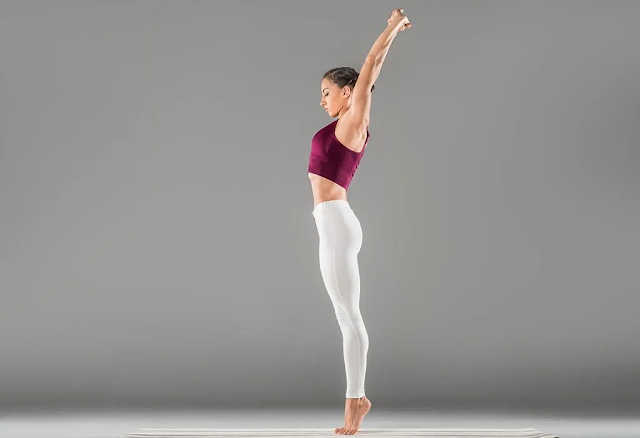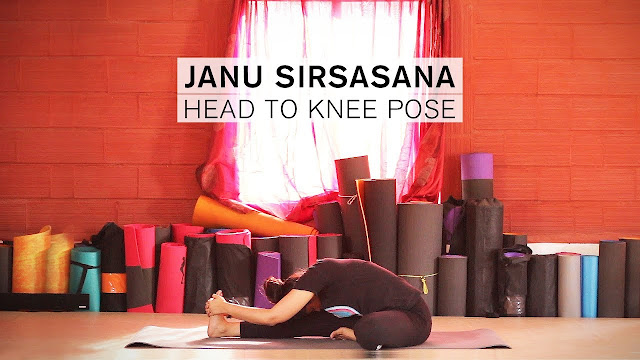Tadasana: The Foundation of Yoga for Mind, Body, and Spirit
Namaste,
Tadasana, commonly referred to as the Mountain Pose, stands tall as the foundational cornerstone in the practice of yoga. This foundational asana, where the body stands tall and grounded like a mountain, embodies grace, stability, and centeredness. Tadasana is not merely a physical posture; it is an embodiment of mindfulness and poise. Join us as we delve into the essence of Tadasana, understanding its significance in grounding the body, aligning the spine, and fostering a profound connection between mind and body. Let us embrace the simplicity and strength within Tadasana, relishing in its ability to cultivate balance, stability, and a sense of rootedness in every breath, every steady stance, and every moment of mindful presence.
In our previous post, we tried to take a look at one of the essential yogasana called “Adho Mukha Svanasana.” And known that, how Adho Mukha Svanasana is very beneficial for physical health like strengthening abdominal muscles, increasing blood circulation, improving the digestive system, the Tone of Arms and Legs, and Control Anxiety. Adho Mukha Svanasana also has many other benefits and helps to relieve many more diseases. Now, in this post, we are going to try to learn about another important Yogasana called “Tadasana.”
 |
| Tadasana |
Tadasana is also known as Palm tree pose, Mountain Pose and Heavenly sum. Tadasana is one of the basic asanas of yoga. Tadasana is used to increase the length of the body and to make the muscles flexible. It is made up of the words' taad + asana. Here tad means palm tree and asana means yoga posture. Therefore, the asana which helps in elongating the body like a palm tree or by adopting the shape of a palm tree is formed is called Tadasana. By the way, in Sanskrit, the palm is also called synonymous with mountain, which is a symbol of length. Tadasana strengthens the digestive system, improves blood circulation in the body, and strengthens the knees, ankles, and hands. There are many benefits of doing Tadasana yoga, and it can be practiced by people of any age at any time, its practice is mostly safe for everyone. This is a simple posture, which is very easy to do. Tadasana is a very beneficial yoga from the point of view of health. So let us know how to do Tadasana, what precautions should be taken while doing this asana, what the benefits of Tadasana and what things should be kept in mind while doing this asana.
Benefits of Tadasana
If you have complaints of back pain, then this asana is very beneficial for you. Practicing it properly can help in reducing the problem of back pain. When you lift the body upwards while practicing this asana, stretching gives relief from back pain.
If you start practicing this asana early (adolescence) then it can help you to increase your height. If it is too late for you now, you can ask your children to start practicing Tadasana.
- Increases Mental Awareness
In yoga, there is not only movement but also meditation. Tadasana helps you connect with your consciousness and increases mental awareness. Practicing it will make you feel more alert, calm, and creative. Also, it is effective to improve concentration.
If you are troubled by knee pain, then you should practice this asana. But keep in mind that for this you have to practice keeping your soles on the ground and not stand on your toes. Practicing Tadasana daily is very beneficial to reduce any kind of pain in the body. Practicing this is beneficial in reducing pain in the knees, thighs, and feet. Apart from this, the practice of Tadasana is also beneficial to reduce the problem of spinal pain.
- Tadasana is Beneficial for Diabetic patients
Practicing Tadasana is very beneficial in the problem of diabetes or diabetes. Research published by the National Center of Biotechnology Information (NCBI) has confirmed that the practice of Tadasana is very beneficial in the issue of type 2 diabetes.
- Tadasana is Beneficial in Digestion related issues
Regular practice of Tadasana cures diseases related to the digestive system. Tadasana should be practiced for problems related to the digestive system such as gas formation in the stomach, constipation, and indigestion. Practicing it properly on a daily basis is beneficial in reducing the risk of stomach-related concerns.
- Useful in Increasing Blood Flow in the Body
There is a risk of many diseases if the blood flow in the body is affected. For this, practicing Tadasana daily is beneficial because the continuous practice of this asana helps in balancing the flow of blood in the body. In heart-related diseases, the damage is caused by affecting the blood flow.
 |
| Tadasana Yoga Pose |
Tadasana helps in maintaining the balance of the body because in this you have to balance the body by standing on the toes of your feet. Its practice also increases flexibility.
If your lifestyle is very sedentary or sedentary, then you should do this asana every day because it improves the posture that has been damaged due to sitting or lying down for a long time. Practicing Tadasana improves the posture of your spine. When you practice this asana regularly, you will notice that you are standing more stable than before and your posture has improved.
- Useful in the problem of Sciatica
The practice of Tadasana is very beneficial in the problem of sciatica. To overcome this problem, you can practice it on the basis of an expert or doctor's advice.
Scientific Studies about Tadasana
Tadasana or Mountain Pose is a foundational yoga pose that is often used as a starting position for other standing yoga poses. Here are some of the benefits of Tadasana, supported by scientific studies:
- Promotes good posture: Practicing Tadasana can help soothe neck or back pain and improve posture ↂ.
- Improves flexibility: Tadasana may improve spinal mobility and hamstring flexibility ↂ.
- Boosts self-esteem: Standing yoga poses like Tadasana could lead to an improved sense of self-esteem ↂ.
- Strengthens legs and abs: Tadasana strengthens your core and quads ↂ.
- Improves digestion: Tadasana requires you to engage your core, so it may play a positive role in digestion ↂ.
Steps of Tadasana
- Stand straight and keep some distance between the feet.
- Keep both hands straight beside your body.
- Now, taking a deep breath, raise both your arms above your head and interlace your fingers.
- Keep the hands straight and stretch.
- Raise your heels and stand on your toes.
- During this, the stretch should be felt in your body from the feet to the fingers of the hands.
- Stay in this position for 10 seconds and keep breathing.
- Now, while exhaling, come back to your starting position.
- Repeat this asana 10 times.
Caution
While doing Tadasana, the body should be absolutely straight. The head, neck, and spine should be in a similar position vertically. The lower part of the waist should be firmly attached to the ground. The part above the waist should be normal and comfortable. Tadasana should be practiced slowly and comfortably. During Tadasana, deep breathing should be done. If you are learning to do this asana, then do not do this yoga practice by coming on the fingers of the feet.
You should take care of these precautions while practicing Tadasana
By the way, Tadasana is a way of getting continuous health benefits for people of all ages, children, youth, old people, and women. However, in some situations, it is advisable not to do so.
- People who have a lot of pain in their ankles or knees should not practice this.
- Avoid practicing Tadasana when you have an injury.
- It should not be practiced when there is a headache.
- If the blood pressure is high or low, then this asana should be avoided.
- Practicing this yogasana immediately after eating should be avoided.
- Tadasana should not be practiced in the problem of high blood pressure.
- This posture is prohibited for a pregnant woman.
 |
| Tadasana Pose |
Tadasana is one of the most important yoga poses and is often referred to as the “mother of all yoga poses”. It is the foundation for all standing poses and provides the perfect opportunity to check alignment, cultivate mindfulness, and connect with the breath.
When performed with awareness, Tadasana can help to improve posture, lengthen the spine, and increase energy and vitality. It can also be a great way to release tension from the body and mind.
Take some time to explore Tadasana the next time you practice yoga. Remember to be patient, be present, and breathe. With time and practice, you will develop a deeper understanding of this pose and how it can benefit your overall health and well-being.
Hope you have liked this article. If you like the article, please subscribe to our blog and share the article. If you want to ask any questions related to the article or have any suggestions, please comment.


















.jpg)



